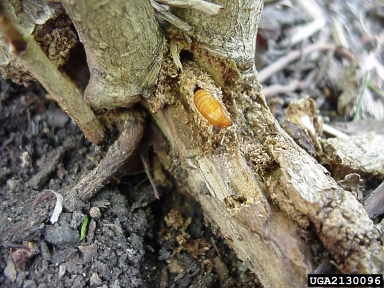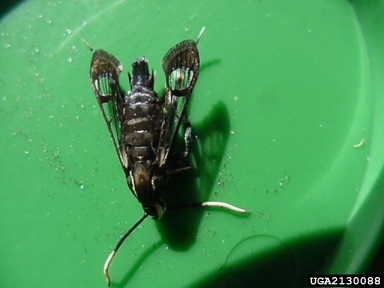Life Cycle & Reproduction
The Sesiidae adult lifespan is short, and during their life
they do not feed much. Because of this, little time and energy
can be wasted in finding a mate (Greenfield and Karandinos
1979).
S. viburni moths are sexually reproducing
organisms which pupate once a year.

(Pupal
case on a stem of a plant)
According to The Morton Arboretum (2013), pupation takes place in early May, lasting for around thirty days. The adult Synanthedon viburni moths will emerge anywhere from late May (Engelhardt 1925) to July.
(Adult female moth)
Once they emerge from plants they will deposit their eggs on bark near wounds on Viburnum plants. The larvae then tunnel into the bark, but do not enter the wood. Over time this tunneling will cause distortions and swellings on the main stems and branches (Pellitteri 2004).

